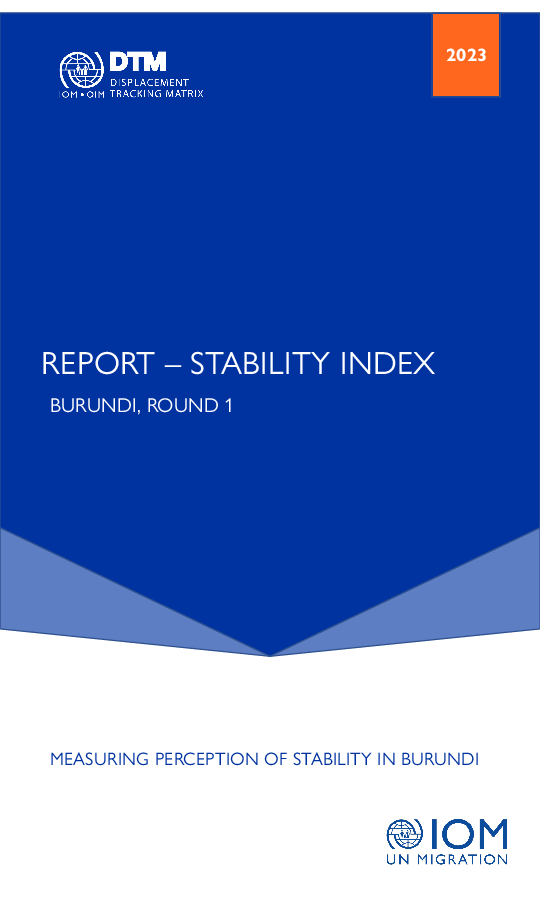-
Countries
-
Data and Analysis
-
Special Focus
-
Crisis Responses
Burundi – Stability Index Round 1 (May 2023)

Contact
DTM Burundi, DTMBurundi@iom.int
Language
English
Location
Burundi
Period Covered
Dec 01 2022
Dec 31 2022
Activity
- Survey
In May 2020, Burundi held its first general elections since 2015. Since the inauguration of the new government in June 2020, the country has seen significant improvements in security, political and socio-economic conditions. This period has been marked by the voluntary return of a considerable number of Burundian refugees (204,301 from 2017 to September 2022) to their communities of origin. Despite this improvement, the return of thousands of refugees without additional support is likely to increase tensions (JRRRP-2021) between returnee communities and residents facing lack of resources (land, livelihoods and basic services). Furthermore, given that Burundi has a large number of internally displaced persons (IDPs) (75,300 in October 2022), the large proportion of IDPs (95%) who are staying in host communities increases the pressure already exacerbated by recurrent damage from torrential rains, floods, high winds, hail, etc. with its corollaries of house destruction. It is also noted that 11 per cent of IDPs are returnees who become IDPs following the destruction of their homes at their place of origin. This adds further complexity to the dynamics of return to the country, involving both internally displaced populations and returnees and posing challenges to the identification of durable solutions to their return and displacement.
In total, 363 places of return and/or displacement were assessed in the provinces of Cankuzo, Cibitoke, Kirundo, Makamba, Muyinga, Rumonge, Rutana and Ruyigi. Using the results of the DTM baseline assessments and the mapping of returnees provided by UNHCR, hills were selected in order to identify areas where large numbers of IDPs and returnees are located concurrently. Indeed, natural hazards and the large number of returnees were a key factor in the selection of hills (localities).
